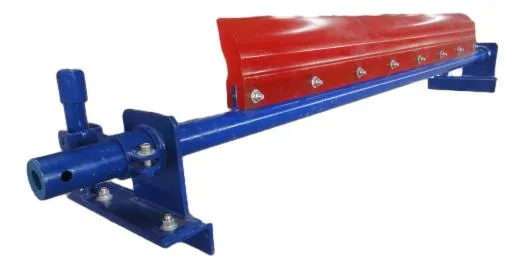 Afrikaans
Afrikaans  Albanian
Albanian  Amharic
Amharic  Arabic
Arabic  Armenian
Armenian  Azerbaijani
Azerbaijani  Basque
Basque  Belarusian
Belarusian  Bengali
Bengali  Bosnian
Bosnian  Bulgarian
Bulgarian  Catalan
Catalan  Cebuano
Cebuano  Corsican
Corsican  Croatian
Croatian  Czech
Czech  Danish
Danish  Dutch
Dutch  English
English  Esperanto
Esperanto  Estonian
Estonian  Finnish
Finnish  French
French  Frisian
Frisian  Galician
Galician  Georgian
Georgian  German
German  Greek
Greek  Gujarati
Gujarati  Haitian Creole
Haitian Creole  hausa
hausa  hawaiian
hawaiian  Hebrew
Hebrew  Hindi
Hindi  Miao
Miao  Hungarian
Hungarian  Icelandic
Icelandic  igbo
igbo  Indonesian
Indonesian  irish
irish  Italian
Italian  Japanese
Japanese  Javanese
Javanese  Kannada
Kannada  kazakh
kazakh  Khmer
Khmer  Rwandese
Rwandese  Korean
Korean  Kurdish
Kurdish  Kyrgyz
Kyrgyz  Lao
Lao  Latin
Latin  Latvian
Latvian  Lithuanian
Lithuanian  Luxembourgish
Luxembourgish  Macedonian
Macedonian  Malgashi
Malgashi  Malay
Malay  Malayalam
Malayalam  Maltese
Maltese  Maori
Maori  Marathi
Marathi  Mongolian
Mongolian  Myanmar
Myanmar  Nepali
Nepali  Norwegian
Norwegian  Norwegian
Norwegian  Occitan
Occitan  Pashto
Pashto  Persian
Persian  Polish
Polish  Portuguese
Portuguese  Punjabi
Punjabi  Romanian
Romanian  Russian
Russian  Samoan
Samoan  Scottish Gaelic
Scottish Gaelic  Serbian
Serbian  Sesotho
Sesotho  Shona
Shona  Sindhi
Sindhi  Sinhala
Sinhala  Slovak
Slovak  Slovenian
Slovenian  Somali
Somali  Spanish
Spanish  Sundanese
Sundanese  Swahili
Swahili  Swedish
Swedish  Tagalog
Tagalog  Tajik
Tajik  Tamil
Tamil  Tatar
Tatar  Telugu
Telugu  Thai
Thai  Turkish
Turkish  Turkmen
Turkmen  Ukrainian
Ukrainian  Urdu
Urdu  Uighur
Uighur  Uzbek
Uzbek  Vietnamese
Vietnamese  Welsh
Welsh  Bantu
Bantu  Yiddish
Yiddish  Yoruba
Yoruba  Zulu
Zulu conveyor drum lagging
Understanding Conveyor Drum Lagging Importance, Types, and Applications
Conveyor systems play an integral role in various industries, facilitating the efficient movement of materials along production lines and transportation pathways. One critical component of these conveyor systems is the drum, which is commonly used to drive the belt. A pivotal aspect of maintaining the functionality and longevity of conveyor drums is the practice of drum lagging. This article will explore the significance of conveyor drum lagging, the different types available, and its numerous applications in various industries.
What is Conveyor Drum Lagging?
Conveyor drum lagging refers to the addition of a wear-resistant material that is applied to the surface of the conveyor drum. This process aims to improve the friction between the drum and the conveyor belt, thereby enhancing traction. Lagging not only helps to prevent slippage of the belt but also protects the drum from wear and tear caused by continuous contact with the belt. By providing a durable interface, lagging ultimately increases the efficiency and lifespan of the conveyor system.
Importance of Drum Lagging
The importance of conveyor drum lagging cannot be overstated. Firstly, it significantly improves operational efficiency. Properly lagged drums minimize belt slippage, which can lead to uneven wear or even damage to the conveyor belt. This ensures that materials are transported smoothly and consistently, reducing downtime caused by belt misalignments or replacements.
Secondly, drum lagging enhances the safety of conveyor operations. Slipping belts not only compromise product integrity but can also pose serious safety hazards for workers. By ensuring reliable belt performance, lagging contributes to a safer working environment, minimizing the risk of accidents related to equipment failure.
Lastly, investing in drum lagging can lead to significant cost savings. While there is an initial cost associated with lagging, the long-term benefits include reduced maintenance costs and extended equipment life. By preventing premature wear on both the belt and the drum, companies can save money on replacements and repairs.
Types of Drum Lagging
conveyor drum lagging

There are several types of conveyor drum lagging materials, each designed to meet specific operational needs.
1. Rubber Lagging The most common type, rubber lagging offers excellent grip and is suitable for various applications. It helps absorb vibrations and impacts, protecting the drum and extending its life.
2. Ceramic Lagging This type is engineered for high-friction applications. Typically used in heavy-duty environments, ceramic lagging provides superior resistance to wear, making it ideal for demanding industrial settings.
3. Polyurethane Lagging Known for its durability and resistance to abrasion, polyurethane lagging is often used in applications where rubber may fail due to harsh conditions. It offers a balance between flexibility and strength.
4. Steel Lagging For extreme applications, steel lagging provides unparalleled strength and durability. It is frequently employed in mining and heavy load environments where other materials may succumb to wear.
Applications of Conveyor Drum Lagging
Conveyor drum lagging is widely used across various industries, including mining, construction, food processing, and manufacturing. In mining operations, for instance, the harsh environments and heavy loads necessitate robust drum lagging solutions that can withstand significant wear. In food processing, hygienic lagging materials are essential to ensure compliance with health standards while maintaining efficiency.
In conclusion, conveyor drum lagging is a vital component that enhances the performance, safety, and longevity of conveyor systems. By understanding its types and applications, businesses can make informed decisions that lead to improved operational efficiency and reduced maintenance costs. As industries continue to evolve, the importance of reliable conveyor systems, bolstered by effective drum lagging, will only increase, driving innovation and productivity across various sectors.
-
Revolutionizing Conveyor Reliability with Advanced Rubber Lagging PulleysNewsJul.22,2025
-
Powering Precision and Durability with Expert Manufacturers of Conveyor ComponentsNewsJul.22,2025
-
Optimizing Conveyor Systems with Advanced Conveyor AccessoriesNewsJul.22,2025
-
Maximize Conveyor Efficiency with Quality Conveyor Idler PulleysNewsJul.22,2025
-
Future-Proof Your Conveyor System with High-Performance Polyurethane RollerNewsJul.22,2025
-
Driving Efficiency Forward with Quality Idlers and RollersNewsJul.22,2025





























